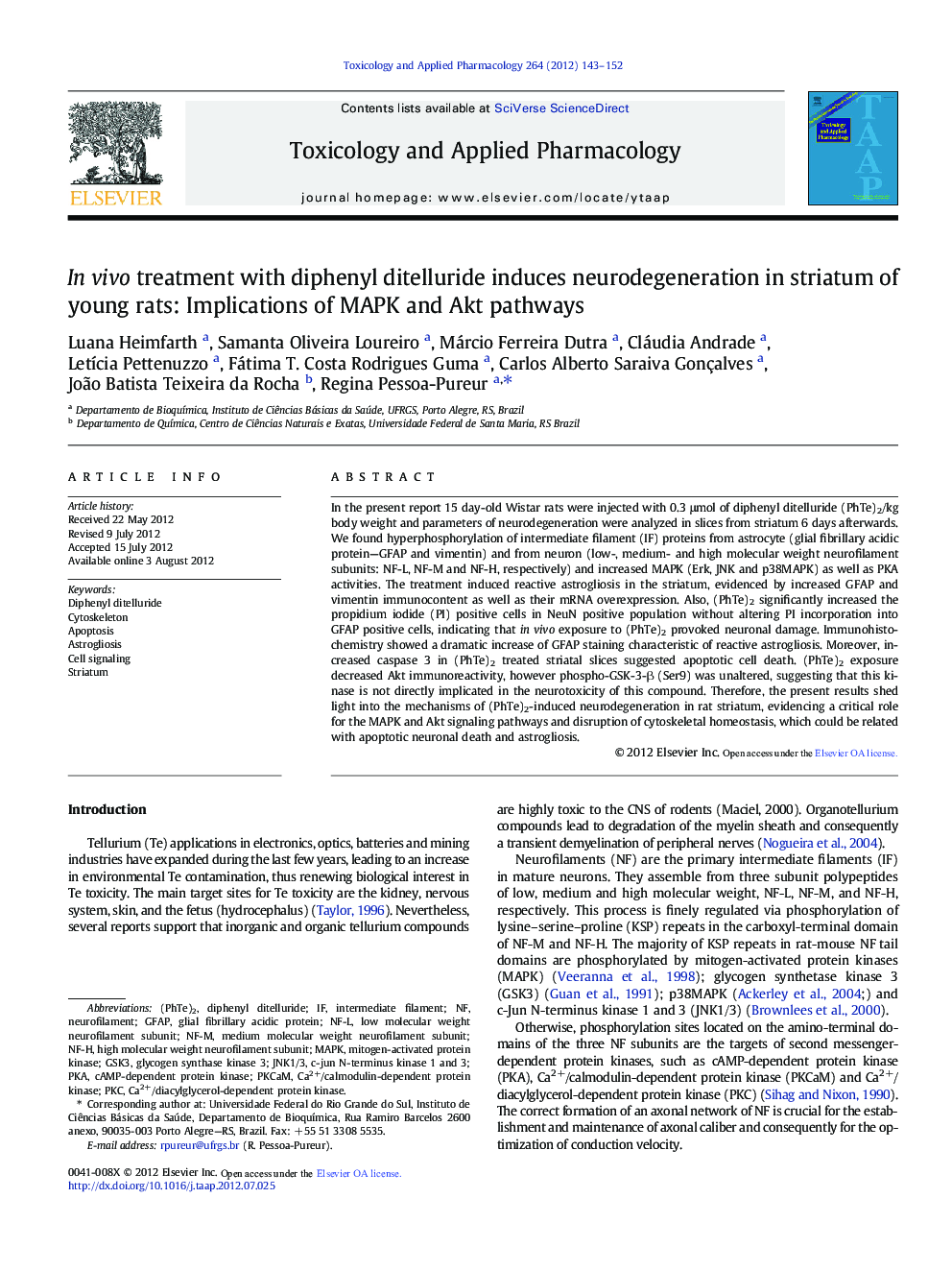| کد مقاله | کد نشریه | سال انتشار | مقاله انگلیسی | نسخه تمام متن |
|---|---|---|---|---|
| 5846744 | 1128506 | 2012 | 10 صفحه PDF | دانلود رایگان |

In the present report 15 day-old Wistar rats were injected with 0.3 μmol of diphenyl ditelluride (PhTe)2/kg body weight and parameters of neurodegeneration were analyzed in slices from striatum 6 days afterwards. We found hyperphosphorylation of intermediate filament (IF) proteins from astrocyte (glial fibrillary acidic protein-GFAP and vimentin) and from neuron (low-, medium- and high molecular weight neurofilament subunits: NF-L, NF-M and NF-H, respectively) and increased MAPK (Erk, JNK and p38MAPK) as well as PKA activities. The treatment induced reactive astrogliosis in the striatum, evidenced by increased GFAP and vimentin immunocontent as well as their mRNA overexpression. Also, (PhTe)2 significantly increased the propidium iodide (PI) positive cells in NeuN positive population without altering PI incorporation into GFAP positive cells, indicating that in vivo exposure to (PhTe)2 provoked neuronal damage. Immunohistochemistry showed a dramatic increase of GFAP staining characteristic of reactive astrogliosis. Moreover, increased caspase 3 in (PhTe)2 treated striatal slices suggested apoptotic cell death. (PhTe)2 exposure decreased Akt immunoreactivity, however phospho-GSK-3-β (Ser9) was unaltered, suggesting that this kinase is not directly implicated in the neurotoxicity of this compound. Therefore, the present results shed light into the mechanisms of (PhTe)2-induced neurodegeneration in rat striatum, evidencing a critical role for the MAPK and Akt signaling pathways and disruption of cytoskeletal homeostasis, which could be related with apoptotic neuronal death and astrogliosis.
⺠Diphenyl ditelluride causes apoptotic neuronal death in the striatum of young rats. ⺠Diphenyl ditelluride causes reactive astrogliosis in the striatum of rats. ⺠Diphenyl ditelluride disrupts the homeostasis of the cytoskeleton of the striatum. ⺠The actions of diphenyl ditelluride are mediated by MAPK and Akt signaling pathways.
Journal: Toxicology and Applied Pharmacology - Volume 264, Issue 2, 15 October 2012, Pages 143-152